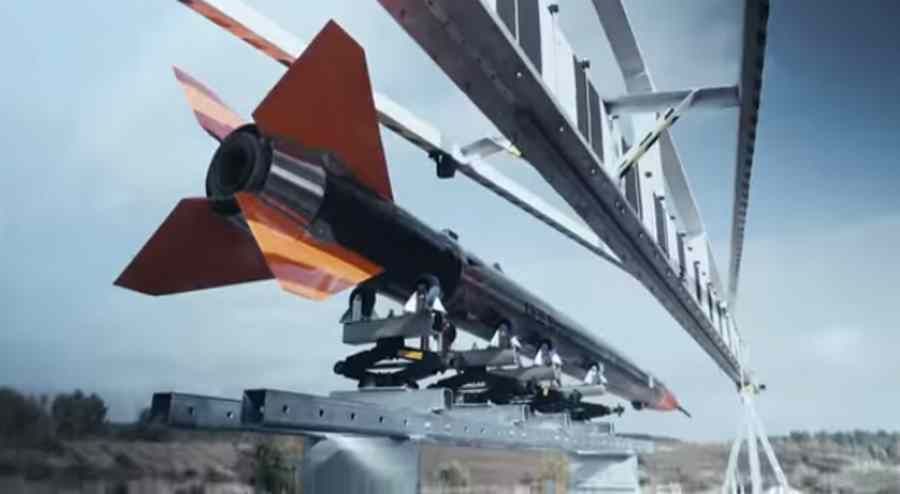ILR-33 “Amber” – Polish rocket with innovative propulsion
ILR-33 “Amber” is an innovative rocket constructed by engineers from the Space Technology Center of the Aerospace Institute using hydrogen peroxide. At the military training ground in Drawsko Pomorskie “Amber” showed its capabilities by reaching a ceiling of 15 kilometers.
ILR-33 „Amber” is the world’s first rocket to use hydrogen peroxide for propulsion with a concentration of more than 98 percent. Hydrogen peroxide is nothing more than hydrogen peroxide water, available at any pharmacy. Of course, hydrogen peroxide is only a three percent solution ofor of hydrogen peroxide. This more than 98 percent was produced at the Aerospace Institute thanks to technology developed and patented by the Institute. The use of such fuel allows to achieve better flight parameters.
The technology developed at the aerospace institute could in the future be used to targetoin scientific, but also military. Maybe the roalso provide competition for the growing space transportation sector – satellite launchointo orbit around the Earth. Especially since the drive is environmentally friendly, which in the era of the fight for clean air can be crucial.
At the end of October at the military training ground in Drawsko Pomorskie „Amber” will reach the ceiling of 15 kilometersow, but with a full tank of fuel mowould reach the limits of 100 kilometersow, which is the contractual limit of space. The maximum velocity of the rocket is greater than the exit velocity of a rifle bullet and is 1200 metersow per second.
The construction work took about three years. About 30 engineers took part in itoin from the Space Technology Center of the Institute of Aviation.
– This rocket and many others are examples of the right approach to using our resourcesoin suborbitaloj technology – said during the press conference the chairman of the Space and Satellite Research Committee of the Polish Academy of Sciences and the project’s supervisor Professor Piotr Wolanski. The scientist added that small rockets face a bright future.
ILR-33 BURSZTYN enables testing of componentsoin rockets at overloads of up to 10 g and conducting research in microgravity conditions during flightoin suborbital.
– This provides an alternative to solutions such as the drop tower; flightoin parabolic and for expensive research aboard the International Space Station. The creation of the rocket is not only publications in leading international scientific journals and the opportunity to conduct research. This is primarily an avenue for a number of commercial works – emphasized in an interview with PAP Eng. Michal Pakosz.
Further developmentoj of this project may result in the development of advanced technologies for building suborbital rockets. This would give the Polish space sector a serious boost in development. It would also give Poland a competitive bid to climbohe cooperation with companies and international institutions.


